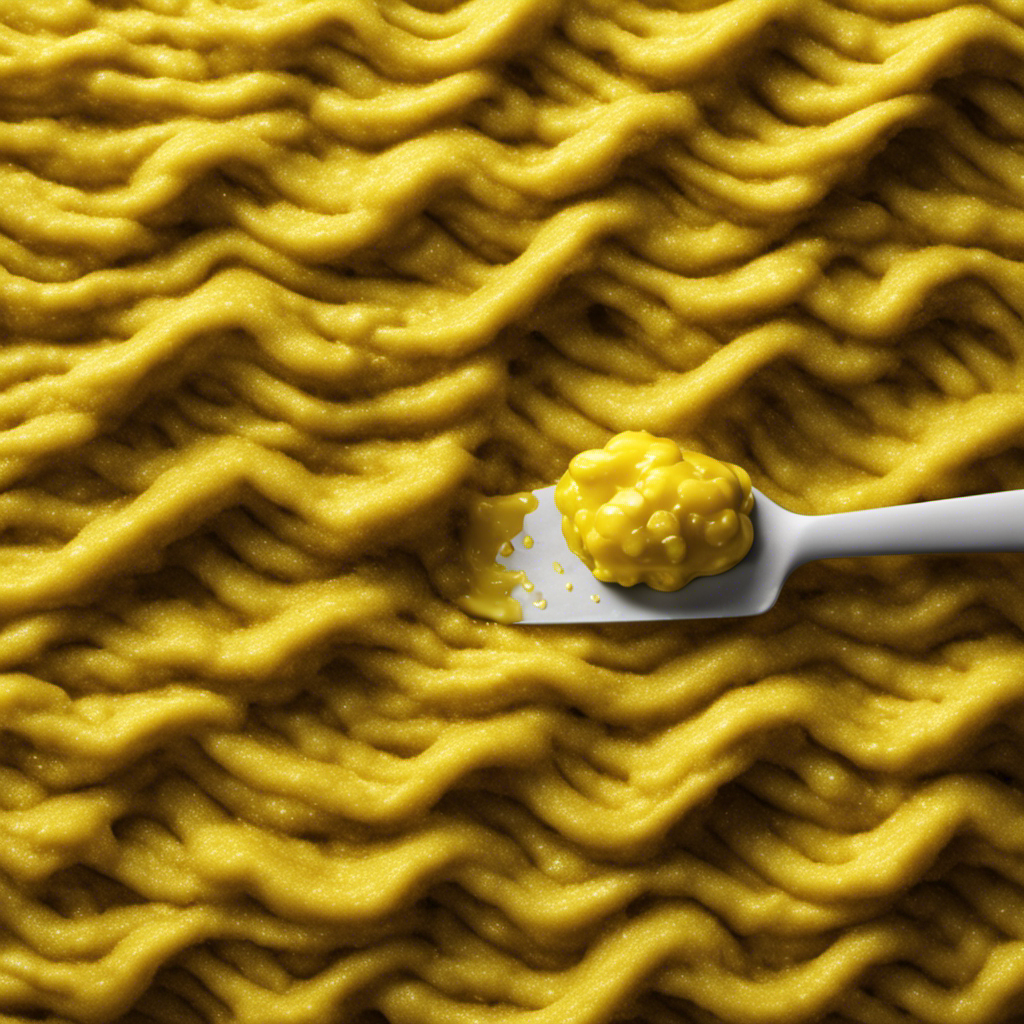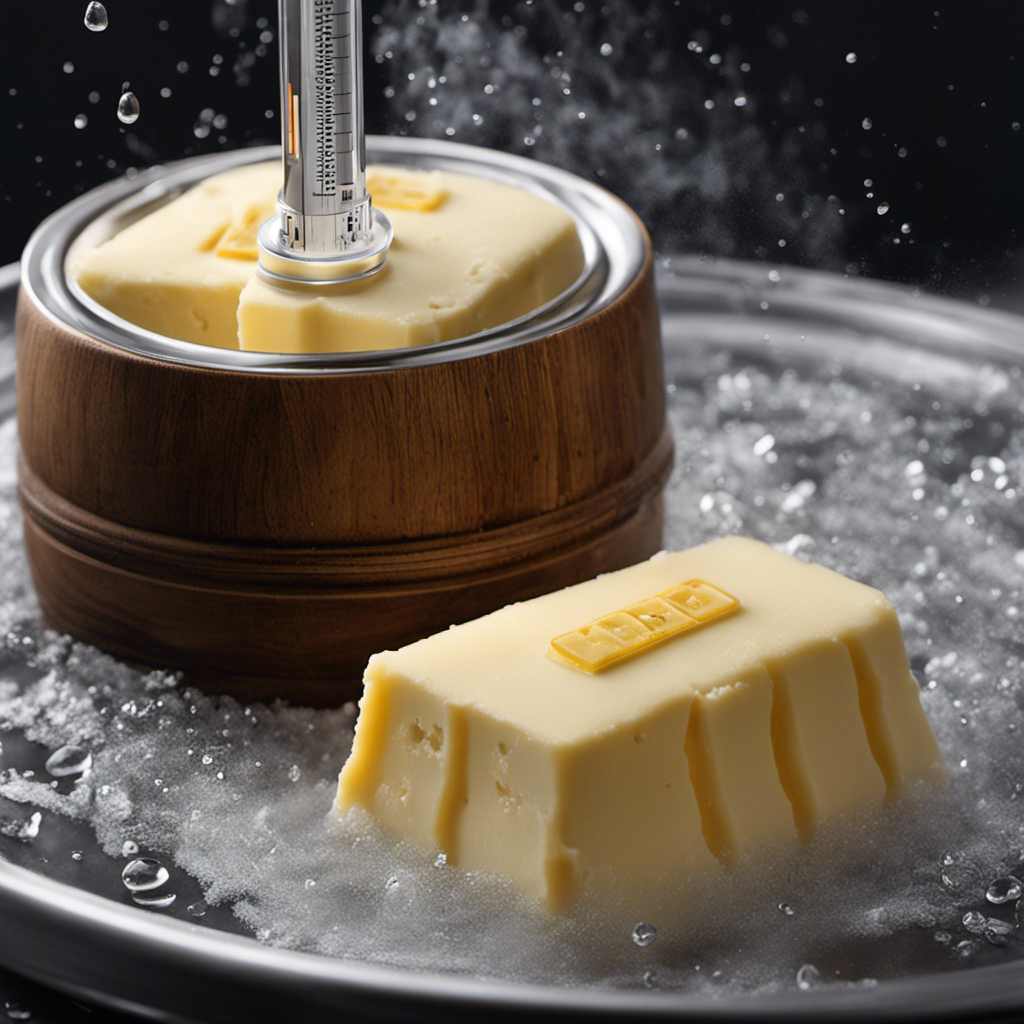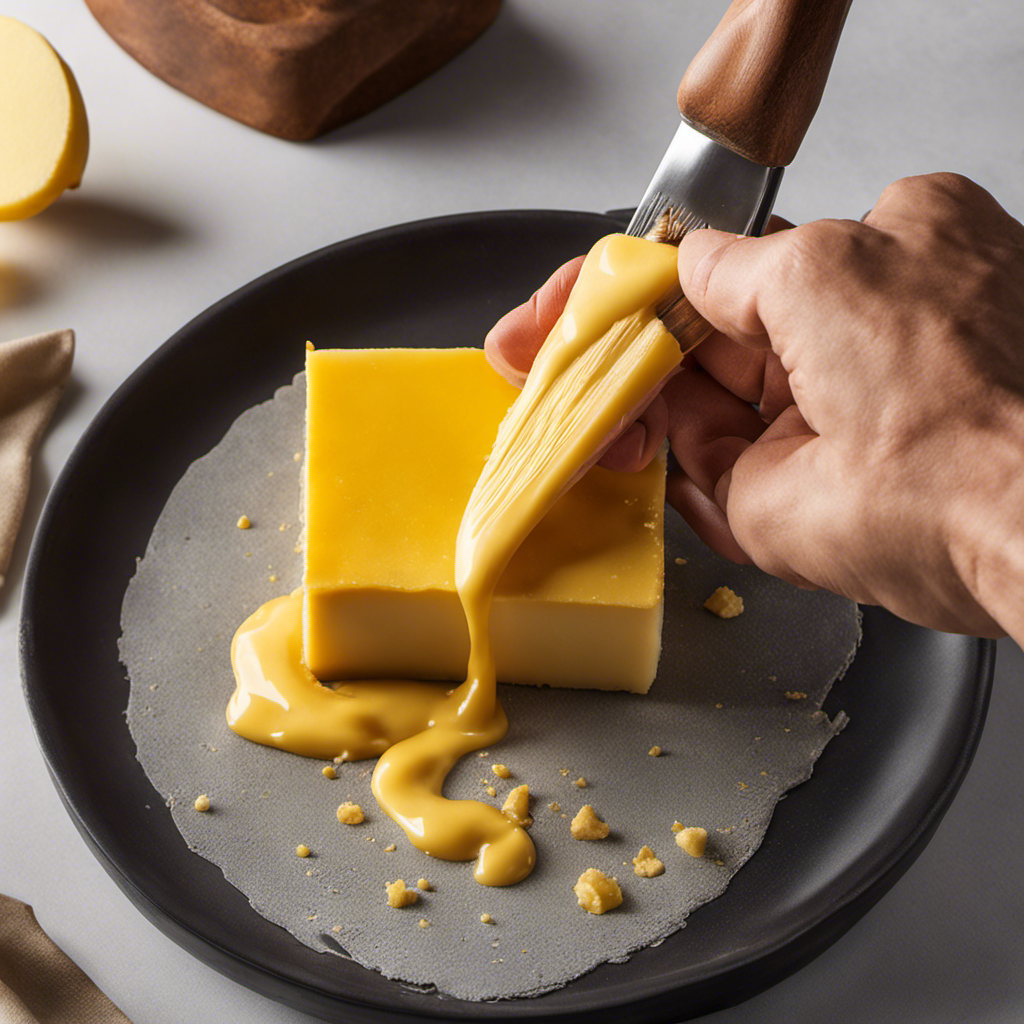I’ve experienced this situation before – you’re having a great time playing with butter slime, and out of nowhere, it gets all over your carpet. But don’t worry! I’m here to assist you in handling this sticky mess effectively.
In this article, I’ll guide you through the steps to effectively remove butter slime from your carpet. We’ll cover everything from understanding the nature of butter slime to preparing the necessary cleaning supplies and treating the stain with homemade solutions.
So, let’s dive in and get that carpet looking spotless again!
Key Takeaways
- Butter slime can be removed from carpet by scraping off excess slime, creating a cleaning solution with warm water and dish soap, blotting the stained area with the solution, and rinsing with clean water and blotting dry.
- Precautions can be taken to prevent future slime incidents by establishing designated areas for playing with slime, laying down protective materials like mats or sheets, setting clear rules and boundaries for slime usage, and teaching children responsible slime usage.
- Additional solutions and tips for removing butter slime from carpet include using vinegar as a natural stain remover, considering steam cleaning for tough stains, utilizing commercial carpet stain removers, and testing removers on a small area first.
- It is important to educate children about carpet care and maintenance to minimize spills and stains caused by slime.
Understanding the Nature of Butter Slime
To understand the nature of butter slime, you need to know that it is a type of slime that contains butter or a butter-like substance.
Butter slime is a popular variation of slime that has a soft and buttery texture. It is made by combining traditional slime ingredients, such as glue and borax or contact lens solution, with butter or a butter-like substance.
The addition of butter gives the slime a unique feel and stretchiness, making it a favorite among slime enthusiasts. However, there are some common issues that can arise when making or playing with butter slime.
These issues include stickiness, clumping, and excessive oiliness. Understanding the ingredients and troubleshooting these issues will help you enjoy your butter slime to its fullest potential.
Preparing the Necessary Cleaning Supplies
First, you’ll need to gather all the cleaning supplies you’ll need. Understanding slime ingredients and testing cleaning solutions are essential steps in effectively removing butter slime from the carpet. Here is a list of supplies you should have on hand:
| Cleaning Supplies | Description | Quantity |
|---|---|---|
| Dish soap | Helps break down the slime | 1 bottle |
| White vinegar | Acts as a natural cleaner | 1 cup |
| Warm water | Dilutes the cleaning solution | 2 cups |
| Microfiber cloth | Absorbs and lifts the slime | 2 pieces |
| Plastic scraper | Removes excess slime from carpet | 1 piece |
Understanding the slime ingredients will help you choose the most effective cleaning solution. Testing different solutions on a small, inconspicuous area of the carpet is crucial to ensure it doesn’t cause any damage. Once you have gathered all the necessary supplies, you can proceed to the next step of removing excess butter slime from the carpet.
Removing Excess Butter Slime From the Carpet
When it comes to removing butter slime stains from the carpet, I’ve found a few effective techniques that work well. I’ll share these stain removal techniques and explain step-by-step how to use them effectively.
First, you’ll want to start by scraping off any excess slime using a dull knife or spoon. Be careful not to push the slime further into the carpet fibers.
Next, mix a solution of warm water and dish soap. Apply this solution to the stained area and gently blot it with a clean cloth or sponge. Avoid rubbing the stain, as this can spread it and make it harder to remove.
Continue blotting the stain until it starts to lift. You may need to repeat this step a few times, depending on the severity of the stain.
Once the stain is mostly gone, rinse the area with clean water and blot it dry with a clean cloth.
If the stain persists, you can try using a carpet stain remover specifically designed for greasy stains. Follow the instructions on the product carefully and test it on a small, inconspicuous area of the carpet before applying it to the stain.
In order to prevent future slime incidents and keep your carpets clean and slime-free, there are a few things you can do. Encourage your kids to play with slime on a designated surface, like a table or tray, to minimize the risk of spills. You can also lay down a plastic or vinyl mat in the play area for easy clean-up.
Regularly vacuuming your carpets can help remove any lingering slime residue and prevent it from getting ground into the fibers. Additionally, consider treating your carpets with a stain-resistant spray to make them more resistant to future stains.
Stain Removal Techniques
There’s a simple trick to remove butter slime stains from your carpet. One of the best cleaning hacks I’ve discovered is using a combination of dish soap and warm water.
First, gently scrape off any excess slime with a spoon or dull knife. Then, mix a few drops of dish soap with warm water in a spray bottle. Spray the solution onto the stained area and let it sit for a few minutes.
Next, blot the stain with a clean cloth or paper towel, working from the outside in to avoid spreading the stain. Repeat this process until the stain is completely gone. If the stain persists, you may want to consider hiring professional carpet cleaning services for a more thorough clean.
Transitioning into preventing future slime incidents, it’s important to teach children about slime etiquette and establish designated areas for slime play to minimize the risk of spills and stains.
Preventing Future Slime Incidents
To minimize the risk of spills and stains, you should establish designated areas for playing with slime. This not only ensures easy cleanup but also teaches children about responsible slime usage.
Here are a few tips to prevent slime accidents:
-
Create a slime-only zone: Set up a specific area in your home where your children can play with slime. This could be a playroom, a designated table, or even an old sheet spread on the floor.
-
Lay down protective materials: Place a waterproof mat or plastic sheet on the playing surface to catch any spills or drips. This will protect your furniture or carpet from potential staining.
-
Set clear rules and boundaries: Teach your children about the importance of playing with slime responsibly. Make sure they understand not to throw or fling it around and to keep it within the designated area.
Treating the Stain With Homemade Solutions
You can easily treat the butter slime stain on your carpet with homemade solutions.
One effective cleaning agent is vinegar. Vinegar is a natural and non-toxic option that can help break down the butter slime and remove the stain from your carpet fibers. To use vinegar, mix equal parts vinegar and water in a spray bottle. Spray the solution directly onto the stain and let it sit for a few minutes. Then, blot the stain with a clean cloth or paper towel until it is fully removed.
Another option is steam cleaning. This method uses hot steam to penetrate deep into the carpet fibers and remove tough stains. Simply rent a steam cleaner or hire a professional to do the job.
Utilizing Commercial Carpet Stain Removers
If the homemade solutions do not work, consider trying commercial carpet stain removers for a more effective treatment option. When it comes to choosing the right brand, there are a few factors to consider. Here are some tips for comparing different brands of commercial carpet stain removers:
- Look for a remover specifically designed for slime stains, as they may have specialized ingredients to break down the slime.
- Read reviews or ask for recommendations from friends or family who have dealt with similar stains.
- Check the label for any warnings or precautions, and make sure the product is safe to use on your type of carpet.
Once you have chosen a commercial stain remover, here are some tips for effectively using it:
- Start by blotting up as much of the slime as possible.
- Follow the instructions on the product label, including any recommended wait times or techniques for application.
- Test the remover on a small, inconspicuous area of your carpet first to ensure it doesn’t cause any damage or discoloration.
By comparing different brands and following these tips, you can increase your chances of successfully removing butter slime from your carpet.
Once the stain is gone, it’s important to take preventive measures for future slime incidents.
Taking Preventive Measures for Future Slime Incidents
When it’s gone, it’s important to take preventive measures for any future slime incidents.
Preventing accidents and teaching kids about carpet care are crucial steps to ensure a slime-free carpet.
First, establish clear rules for playing with slime, such as keeping it away from carpeted areas.
Designate a specific space, like a table or play mat, where slime can be enjoyed safely.
Teach kids to clean up any spills immediately to avoid stains.
Regularly vacuuming the carpet can also help remove any lingering slime residue.
Additionally, consider using a protective barrier, like a plastic sheet or rug, to safeguard your carpet during slime play.
Frequently Asked Questions
Can I Use Regular Soap or Detergent to Remove Butter Slime From My Carpet?
Regular soap or detergent may not be effective in removing butter slime from carpet. It’s best to explore alternative cleaning methods like using vinegar or a mixture of baking soda and water. If all else fails, consider professional carpet cleaning services.
How Long Does It Usually Take for Homemade Solutions to Work on Butter Slime Stains?
Commercial stain removers for butter slime stains can be effective, but homemade solutions may take longer to work. To prevent stains from setting in on carpet, act quickly, scrape off excess slime, blot with a clean cloth, and use a stain remover according to instructions.
Are There Any Specific Carpet Materials or Colors That Are More Prone to Staining From Butter Slime?
Carpet materials and colors vary in their susceptibility to butter slime stains. Some materials, like wool, are more prone to staining, while darker colors can conceal stains better. To prevent stains, prompt cleaning and regular vacuuming are key.
Can I Use a Hairdryer to Speed up the Drying Process After Removing Butter Slime From the Carpet?
Using a blow dryer to dry carpet after removing butter slime can be effective in speeding up the process. As for vinegar, it can be used as a natural alternative to remove butter slime from carpet.
Are There Any Household Items or Ingredients That Should Never Be Used to Clean Butter Slime Stains From the Carpet?
Household items and ingredients can vary in their effectiveness and safety when it comes to cleaning butter slime stains from carpet. It is important to take proper safety precautions and consider professional carpet cleaning for the best results.
Conclusion
In conclusion, dealing with butter slime on your carpet can be quite a challenge, but with the right techniques and supplies, it is possible to remove it effectively. By understanding the nature of butter slime and using homemade solutions or commercial stain removers, you can get your carpet back to its pristine condition.
Don’t let the slime take over your carpet! Take preventive measures to avoid future incidents and keep your carpet slime-free. With a little effort and know-how, you can conquer any butter slime mess!










